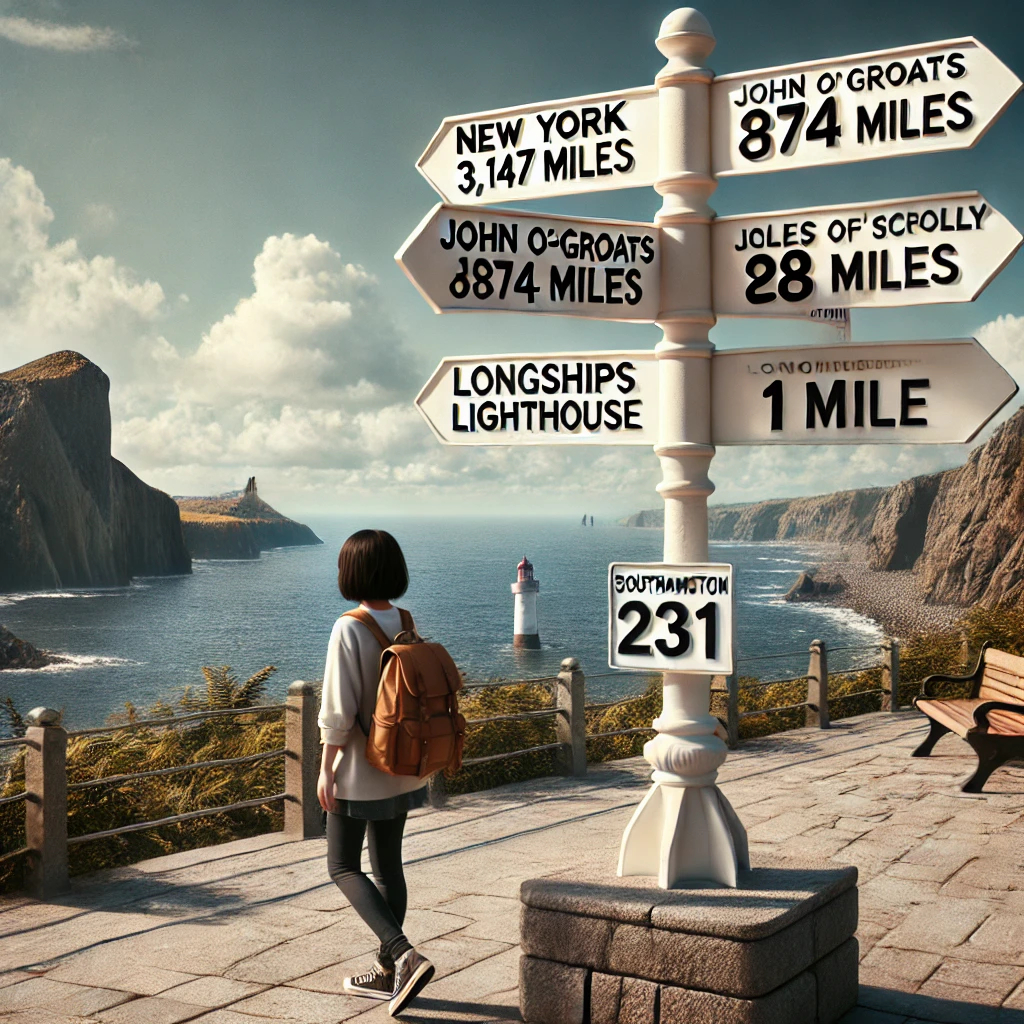ChatGPT:
Land’s End, England is one of the most iconic landmarks in the UK, located in Cornwall at the westernmost point of mainland England. Known for its rugged cliffs, stunning coastal scenery, and its status as a symbolic “end of the land,” it has been a significant geographical, cultural, and tourist destination for centuries. Here’s an overview of its origin, history, and development:
Geography and Name
• Land’s End lies on the Penwith Peninsula in Cornwall, overlooking the Atlantic Ocean. It is part of the Cornish coast, known for its dramatic granite cliffs and natural beauty.
• The name “Land’s End” originates from its literal position as the most westerly point of England, symbolizing the country’s boundary before the vast expanse of the Atlantic Ocean.
Historical Significance
1. Ancient Times:
• Land’s End has been important since prehistoric times, evidenced by the numerous Neolithic and Bronze Age remains in the region. Nearby sites include ancient stone circles, burial mounds, and standing stones.
• The area’s strategic position and rich marine life made it a crucial point for early settlers and traders.
2. Cultural Significance:
• Land’s End features prominently in Cornish mythology. It is associated with tales of the lost land of Lyonesse, a mythical sunken kingdom said to lie between Land’s End and the Isles of Scilly.
3. Navigation and Seafaring:
• For sailors and traders, Land’s End served as a critical navigational point. The perilous waters off its coast were infamous for shipwrecks, making it an essential landmark for maritime charts.
Development as a Tourist Destination
1. 19th Century:
• During the Victorian era, the romantic appeal of Cornwall’s rugged landscapes drew increasing numbers of visitors, including artists and writers.
• Land’s End became a popular spot for holidaymakers, with the advent of railways making it more accessible to tourists.
2. 20th Century:
• In 1908, Land’s End officially became private property when it was purchased by the Pearson family, who began charging a fee to maintain the site and manage tourism.
• A hotel and visitor center were constructed to cater to the growing number of visitors, and Land’s End started being associated with the famous “John o’ Groats to Land’s End” journey (the longest route between two extremities in mainland Britain).
3. Modern Developments:
• Today, Land’s End is a commercialized tourist attraction offering various amenities, such as:
• A visitor center with exhibitions.
• Restaurants and shops.
• Family attractions like the “4D Experience.”
• The landmark remains a starting or finishing point for endurance events, charity walks, and cycling challenges.
Natural and Cultural Heritage
• Land’s End is part of the Cornish Mining World Heritage Site and within an Area of Outstanding Natural Beauty (AONB).
• Its cliffs are home to diverse wildlife, including seabirds, seals, and occasional sightings of basking sharks or dolphins.
• Despite its modern developments, the natural beauty of the coastline and the surrounding landscapes remains its most defining feature.
Symbolic Importance
• Land’s End represents a meeting point of land and sea and a metaphorical place of endings and beginnings, making it a cherished part of the British psyche.
• The signpost at Land’s End, which can be personalized with names and distances, is one of the most photographed features and symbolizes journeys and achievements.
In essence, Land’s End is a blend of natural beauty, mythology, history, and modern tourism, making it an enduring symbol of England’s connection to the sea and its storied past.
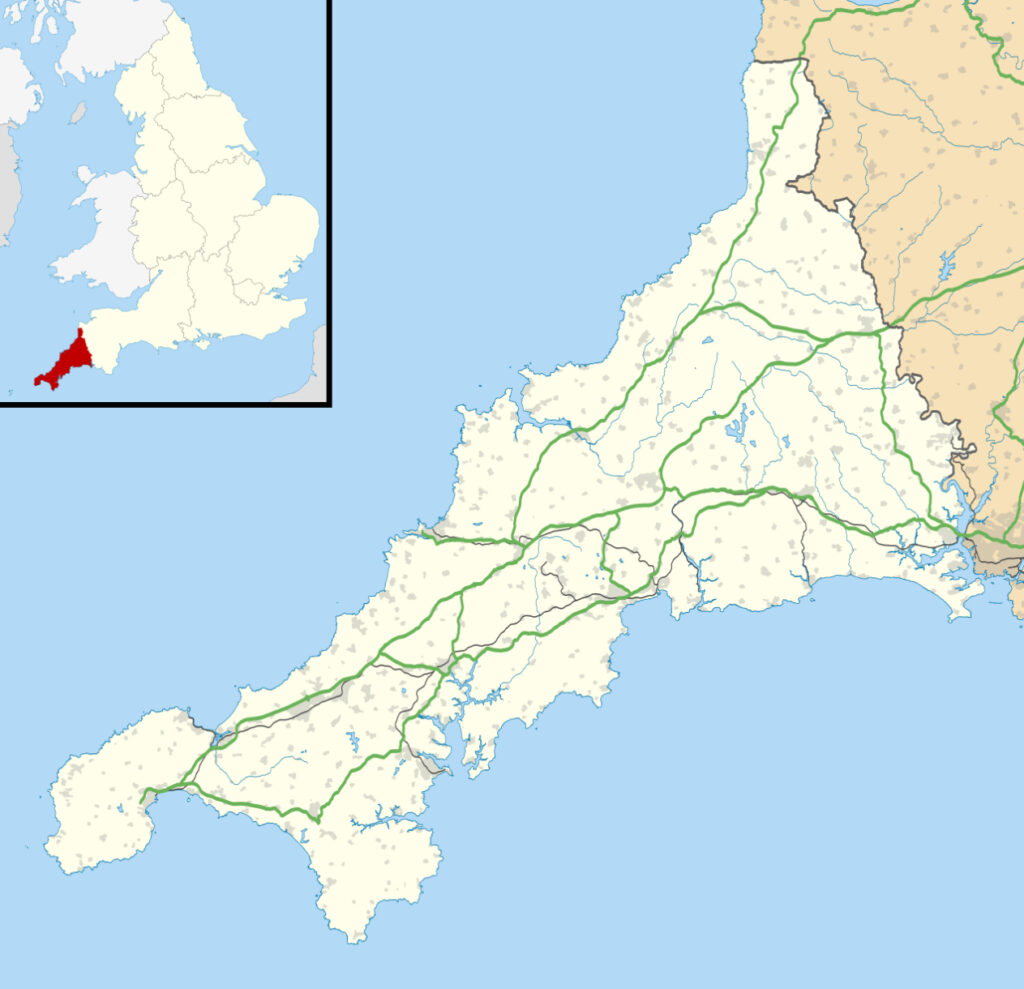
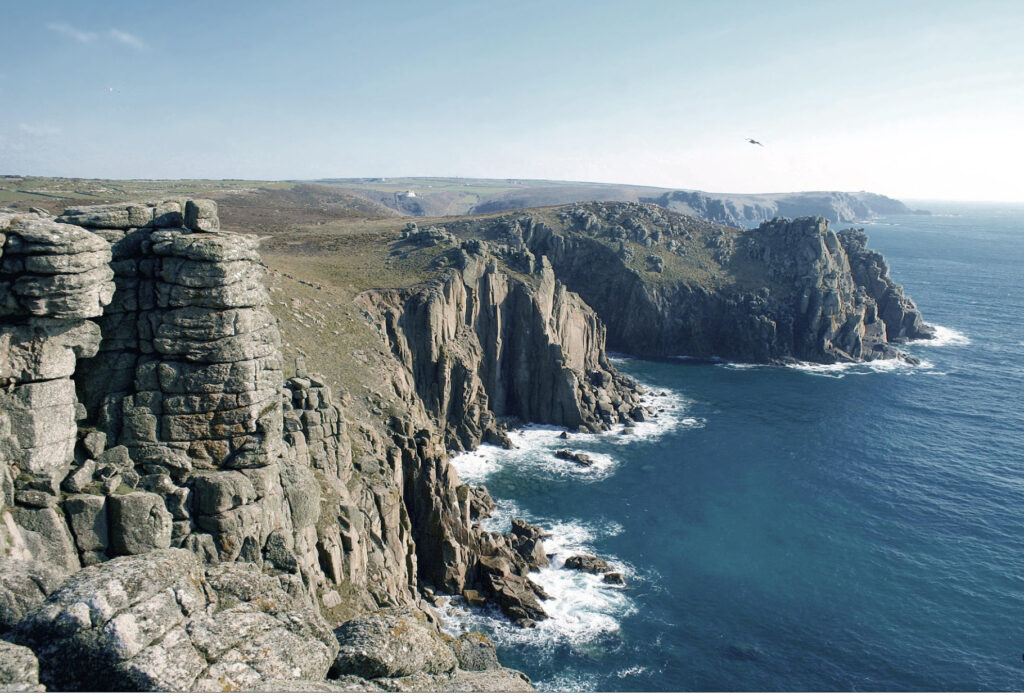
The idea of the “end of the earth” has fascinated people across cultures and eras. Locations like Land’s End in England and Fisterra (Finisterre) in Spain have drawn people for centuries, not only for their dramatic natural beauty but also for their symbolic and cultural meanings. Here’s a deeper exploration of why people are captivated by these places:
1. The Symbolism of Boundaries and Limits
• Psychological Appeal: The concept of the “end of the earth” evokes a sense of finality and mystery. It symbolizes the boundary between the known and the unknown, where land meets an endless expanse of water or sky. This triggers a universal human desire to explore and push boundaries, both physical and existential.
• Spiritual Connection: Standing at such places often inspires introspection. People feel a sense of humility and awe in the face of vastness, making these locations places of spiritual or emotional transformation.
2. Historical and Mythological Significance
• Fisterra (Finisterre):
• The name itself means “End of the Earth” in Latin (Finis Terrae). Located in Galicia, Spain, it was considered the westernmost point of the known world in ancient times (before the discovery of the Americas).
• The Romans believed it to be a sacred place where the sun sank into the ocean, marking the edge of their world. It held religious and mystical significance, seen as a point of transition between the earthly and the divine.
• It later became a significant pilgrimage site, particularly as the final stop on the Camino de Santiago, where pilgrims traditionally burned their clothes or boots as a ritual of purification and renewal.
• Land’s End:
• Similarly, Land’s End has mythological ties, particularly to the lost kingdom of Lyonesse, said to have disappeared beneath the sea. This story taps into the allure of the mysterious and unattainable.
3. Connection to Exploration
• These “ends of the earth” were historically associated with exploration, discovery, and the unknown. They were gateways to uncharted territories, evoking both fear and fascination.
• Fisterra: For sailors and explorers, it marked the point before venturing into the perilous Atlantic, symbolizing the transition from safety to danger.
• Land’s End: Its cliffs served as a vital navigational landmark, reinforcing its significance as a place of beginnings and endings for voyages.
4. Aesthetic and Emotional Appeal
• Natural Beauty: The dramatic cliffs, sweeping ocean views, and rugged landscapes of places like Land’s End and Fisterra evoke a primal connection to nature’s raw power and beauty.
• Visitors often report feeling a mix of peace and exhilaration standing at such locations, watching the seemingly infinite horizon.
• Romanticism: Writers, poets, and artists have long romanticized these places as metaphors for adventure, longing, and solitude. Their depictions contribute to the allure of visiting these sites.
5. Pilgrimage and Personal Transformation
• Journey’s End: These locations are often tied to journeys, whether literal or metaphorical. Fisterra, in particular, is the culminating point of the Camino de Santiago, symbolizing closure, reflection, and renewal. Similarly, many endurance walkers or cyclists use Land’s End as a symbolic starting or ending point for their adventures.
• Personal Reflection: At the edge of the land, people often reflect on their place in the world, their accomplishments, and their aspirations. The vastness of the ocean fosters a sense of connection to something greater than oneself.
6. Mysticism and the Sublime
• The sense of standing at the “end” of something tangible, staring out into the infinite, often evokes feelings of the sublime—a mixture of awe, fear, and wonder. This emotional experience is central to the appeal of such places.
• Cultural Mysticism: Many cultures imbued these locations with spiritual meaning, believing them to be portals to other realms, whether literal (as in ancient myths) or symbolic.
7. Modern Fascination
• Today, people visit these places for reasons ranging from personal challenges (completing long-distance routes) to a desire for dramatic and Instagram-worthy landscapes. Despite commercialization, the innate sense of wonder and inspiration remains.
Conclusion
The allure of places like Land’s End and Fisterra stems from their ability to connect people with fundamental human experiences: curiosity, the desire for exploration, and the search for meaning. They are not just geographical termini but also symbolic sites that encapsulate the spirit of adventure, transformation, and introspection. Standing at the “end of the earth” invites visitors to look outward to the horizon while also looking inward at themselves.
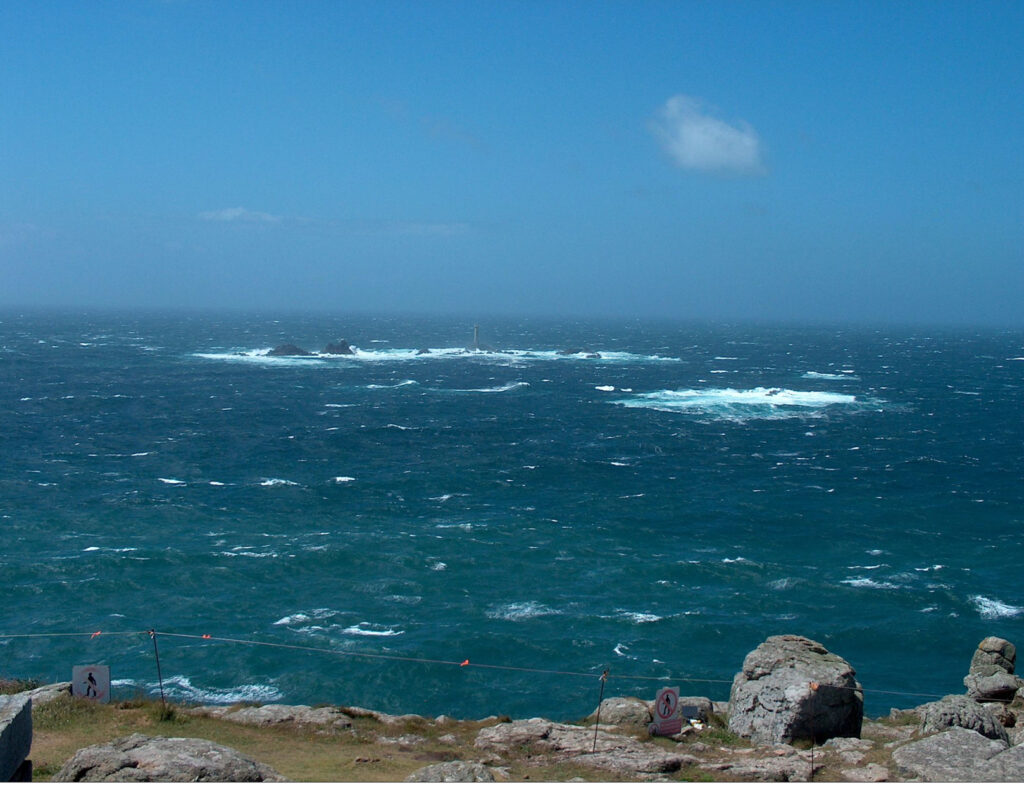
Several places around the world share similar names or ideas connected to the concept of the “end of the earth,” reflecting cultural fascination with boundaries and edges. Here are some notable examples:
1. Cape Finisterre (Portugal)
• Like its Spanish counterpart, this Portuguese Finisterre (Cabo de Finisterra) near Porto Covo in southern Portugal also means “End of the Earth.”
• This area was also historically considered a western edge of the known world during ancient times.

2. Finistère, France
• A department in Brittany, France, whose name derives from the Latin Finis Terrae (End of the Earth).
• It is located on the rugged Breton coast, with dramatic cliffs and coastal landscapes, embodying the same maritime mystique as other “ends of the earth.”
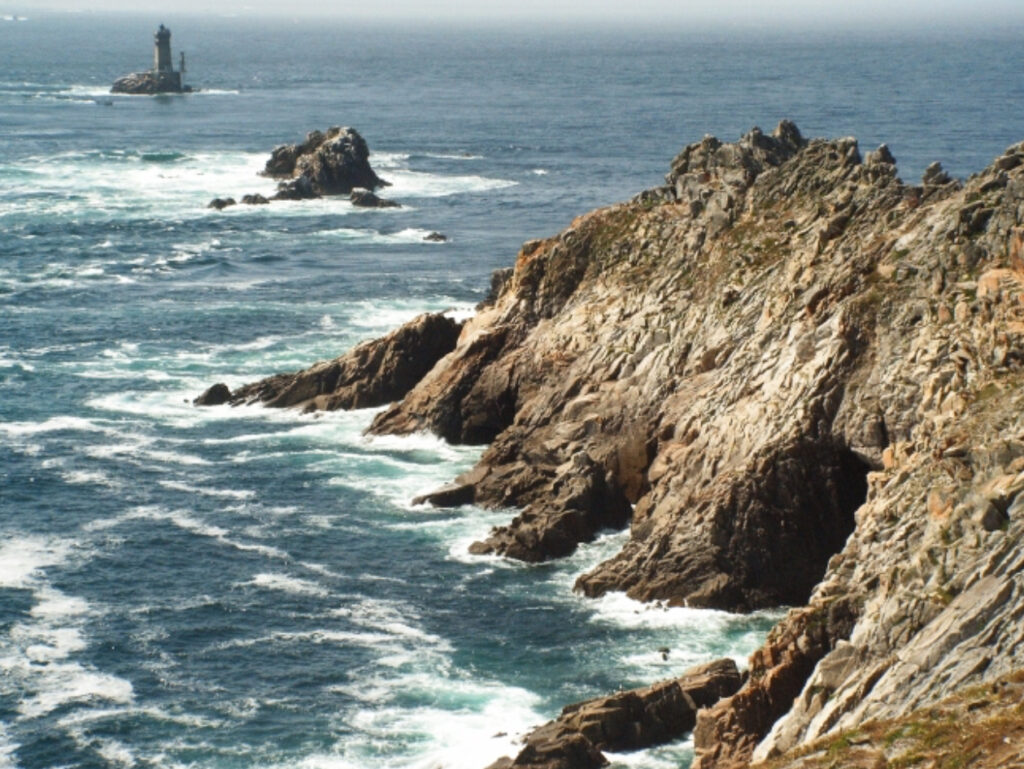
3. World’s End, Norway
• A coastal area in Vestfold, Norway, called Verdens Ende (World’s End) is known for its beautiful archipelago of rocks and small islands.
• Popular with tourists, it symbolizes a remote and dramatic edge of land meeting the sea.
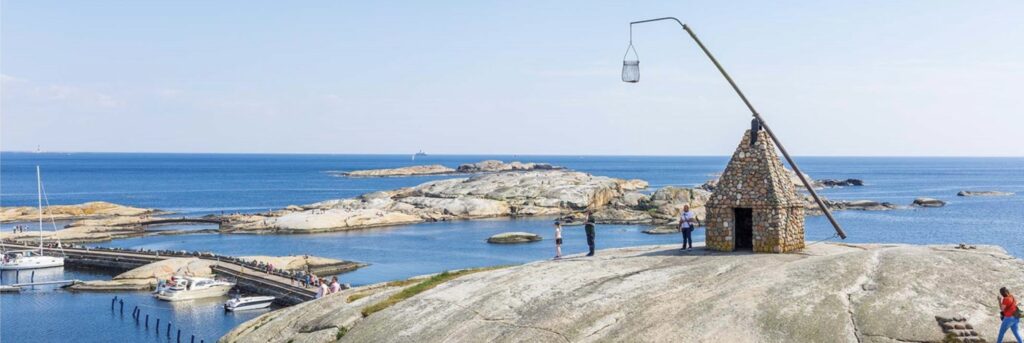
4. Cape Horn, Chile
• Located at the southernmost tip of South America, Cape Horn is often seen as the “end of the earth” for its remote and treacherous location.
• Long feared by sailors, it is often compared to Land’s End or Fisterra due to its rugged beauty and symbolic position as the boundary of the known world.
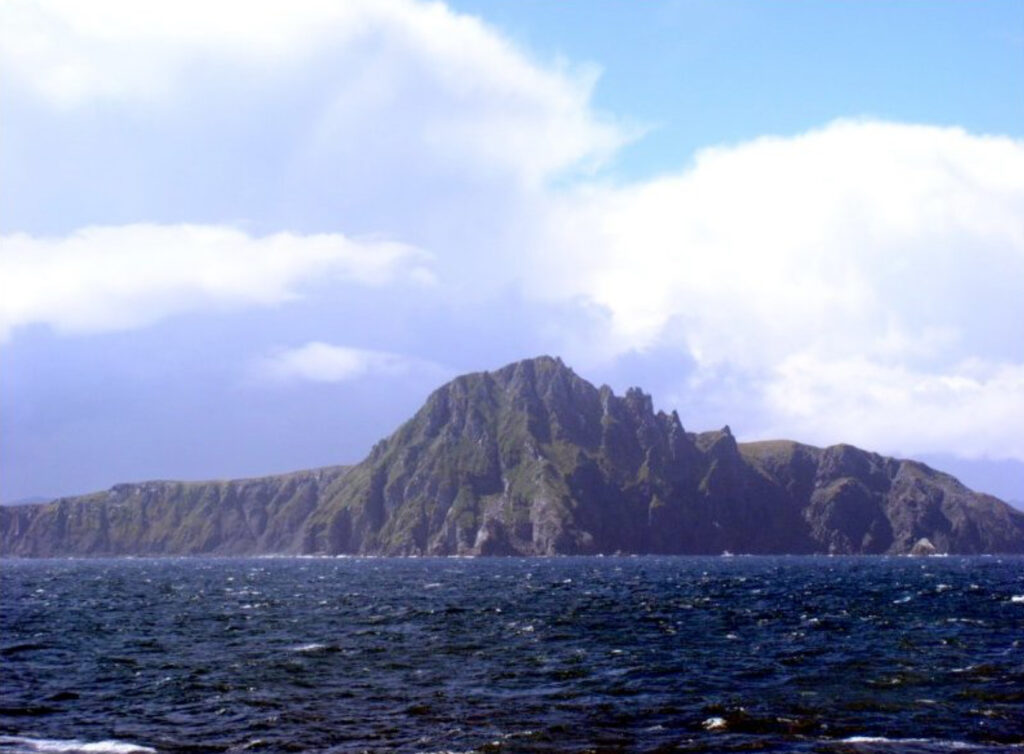
5. The End of the World, Ushuaia, Argentina
• Ushuaia is often referred to as the “end of the world” (fin del mundo) as it is the southernmost city in the world, located in Tierra del Fuego, near Cape Horn.
• The region’s isolation and breathtaking scenery make it a natural parallel to other “end of the earth” locations.
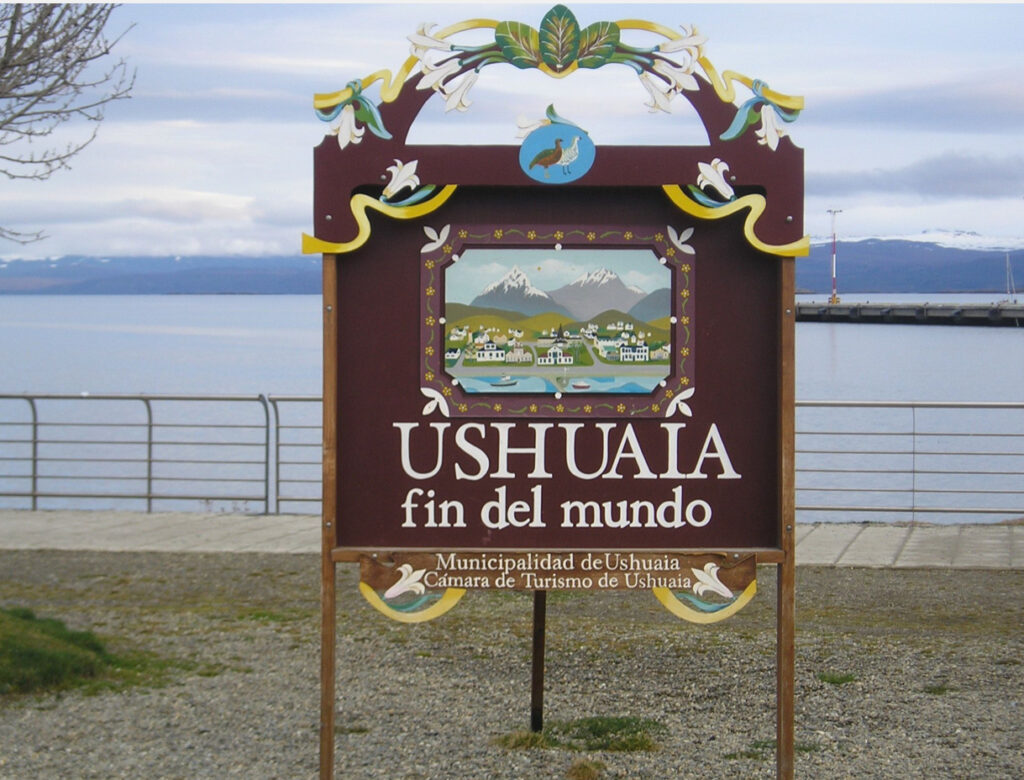
6. World’s End, Massachusetts, USA
• A coastal park in Hingham, Massachusetts, named World’s End offers sweeping views of the Boston skyline and the Atlantic Ocean.
• While the name is more metaphorical, it draws people seeking serene landscapes at a symbolic “edge.”
7. Fin del Mundo, Patagonia (Chile and Argentina)
• “End of the World” locations in Patagonia include areas like Puerto Williams on Navarino Island, further south than Ushuaia.
• These places are celebrated for their remote, untouched beauty and their association with the limits of human habitation.
8. Finisterre Range, Papua New Guinea
• A mountain range in Papua New Guinea called the Finisterre Range reflects a similar naming origin. Although not coastal, the name evokes the idea of a distant and isolated boundary.
9. World’s End, New Zealand
• Near Te Anau in New Zealand, parts of the Southland region are colloquially referred to as the “world’s end” because of their remoteness and wild landscapes.
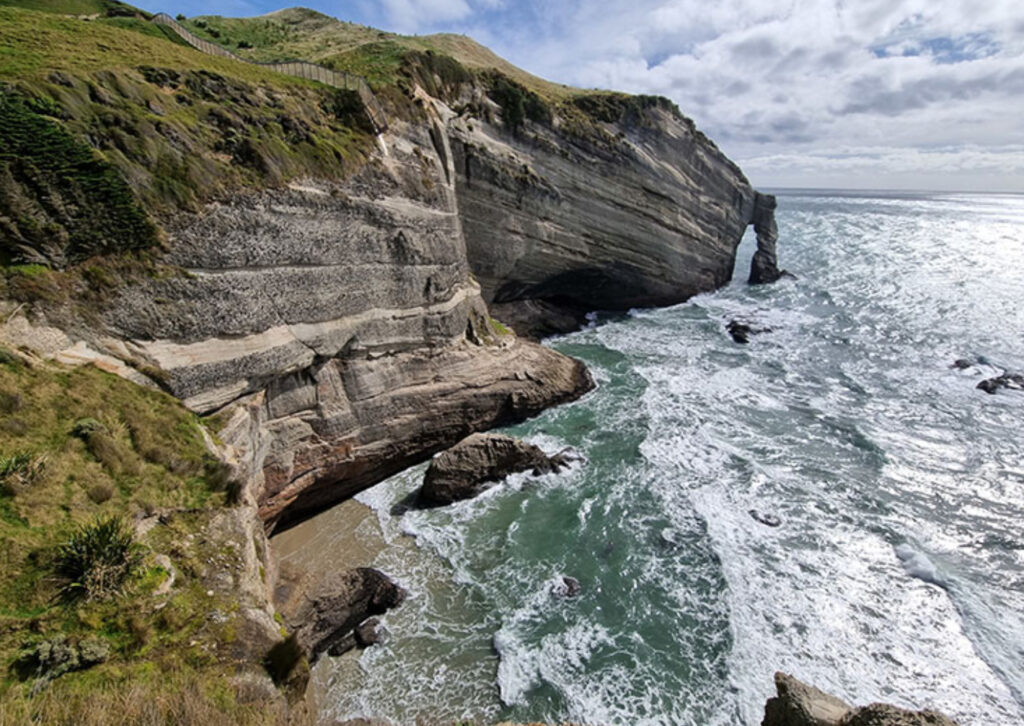
10. Cape Farewell, Greenland
• The southernmost point of Greenland, Nunap Isua or Cape Farewell, is often seen as the Arctic’s “end of the earth” due to its remote and extreme location.
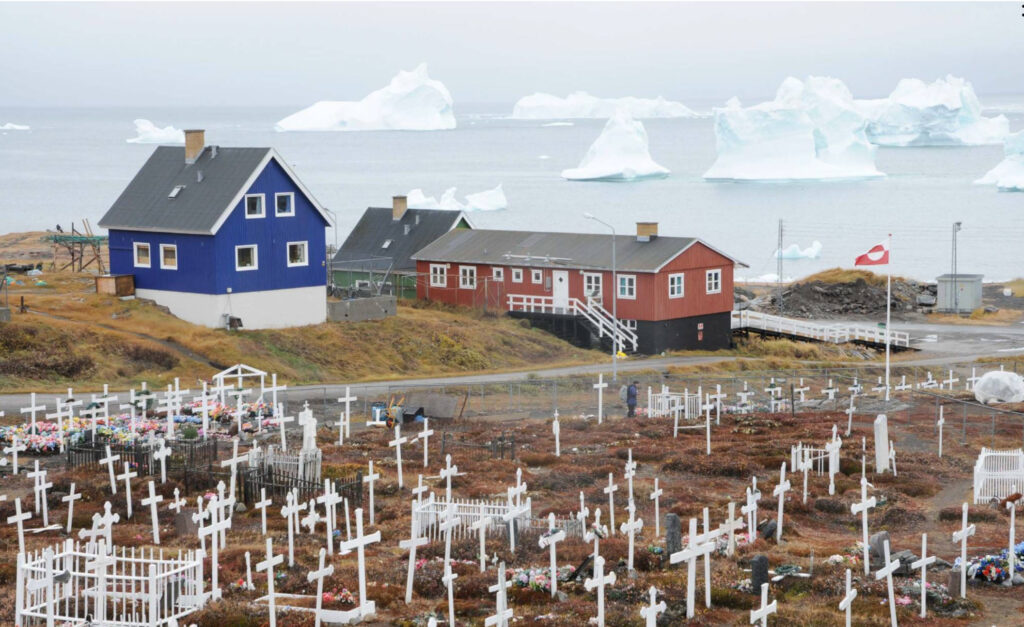
Why These Names Resonate
The shared use of names like “Finisterre” or “World’s End” reflects a universal human fascination with the unknown, the unexplored, and the dramatic natural landscapes where land meets the vast sea or wilderness. These places often embody a sense of isolation, adventure, and the profound, symbolic transition between the tangible and the infinite.
While Land’s End is primarily known for its dramatic coastal scenery, there are a few historical monuments and attractions within easy walking distance that highlight the natural beauty and cultural heritage of the area. Here are the main landmarks and attractions:
1. The First and Last House
• Located near the iconic signpost, this small white building is famously dubbed the “First and Last House in England” because it is the first (or last) dwelling before the ocean.
• It has served as a souvenir shop and café for over a century and is a popular spot for visitors.
2. Land’s End Signpost
• One of the most famous attractions, this personalized signpost marks distances to cities like New York, London, and John o’ Groats.
3. Greeb Farm
• A short walk from Land’s End, Greeb Farm is a restored 200-year-old Cornish farm.
• Visitors can explore traditional farming practices, interact with farm animals, and enjoy craft demonstrations, making it a family-friendly stop.
4. The Longships Lighthouse
• Visible from the cliffs at Land’s End, the Longships Lighthouse sits on a rocky islet about 1.25 miles offshore.
5. Sennen Cove
• About 1 mile from Land’s End, this charming fishing village features a sandy beach, perfect for a relaxing stroll or surfing.
6. Mayon Cliff and Coastguard Lookout
• A short walk along the coastal path leads to Mayon Cliff, offering stunning views of the coastline and the Atlantic.
7. The South West Coast Path
• Land’s End is a key point on the South West Coast Path, a 630-mile National Trail. Short sections of the trail nearby offer breathtaking views of cliffs, coves, and wildlife, making it a popular option for walkers.
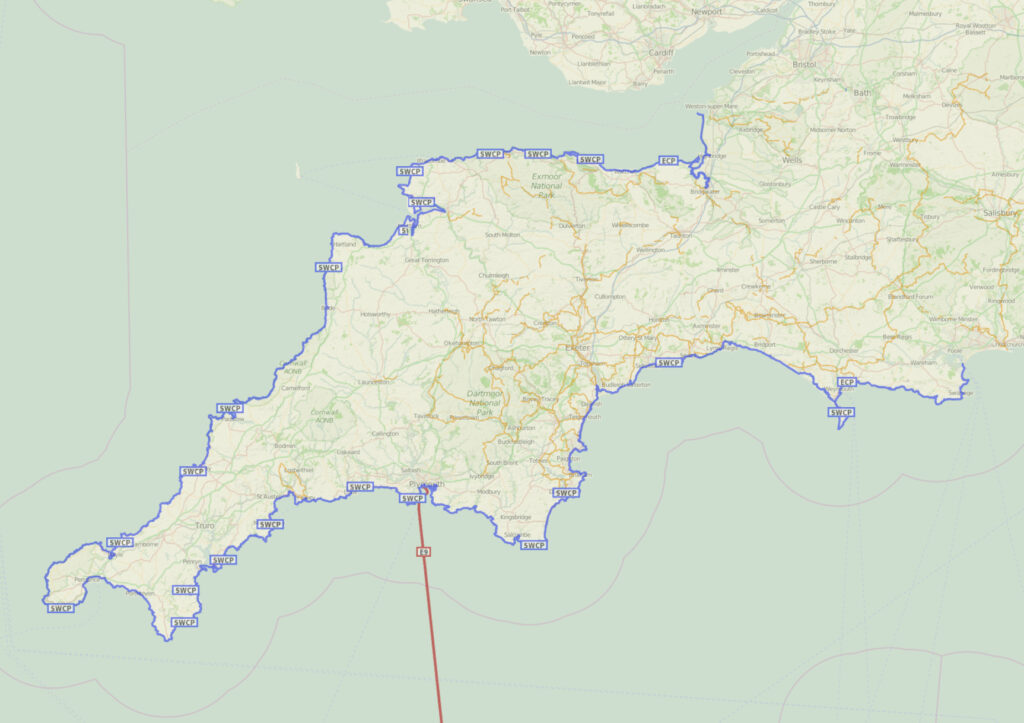
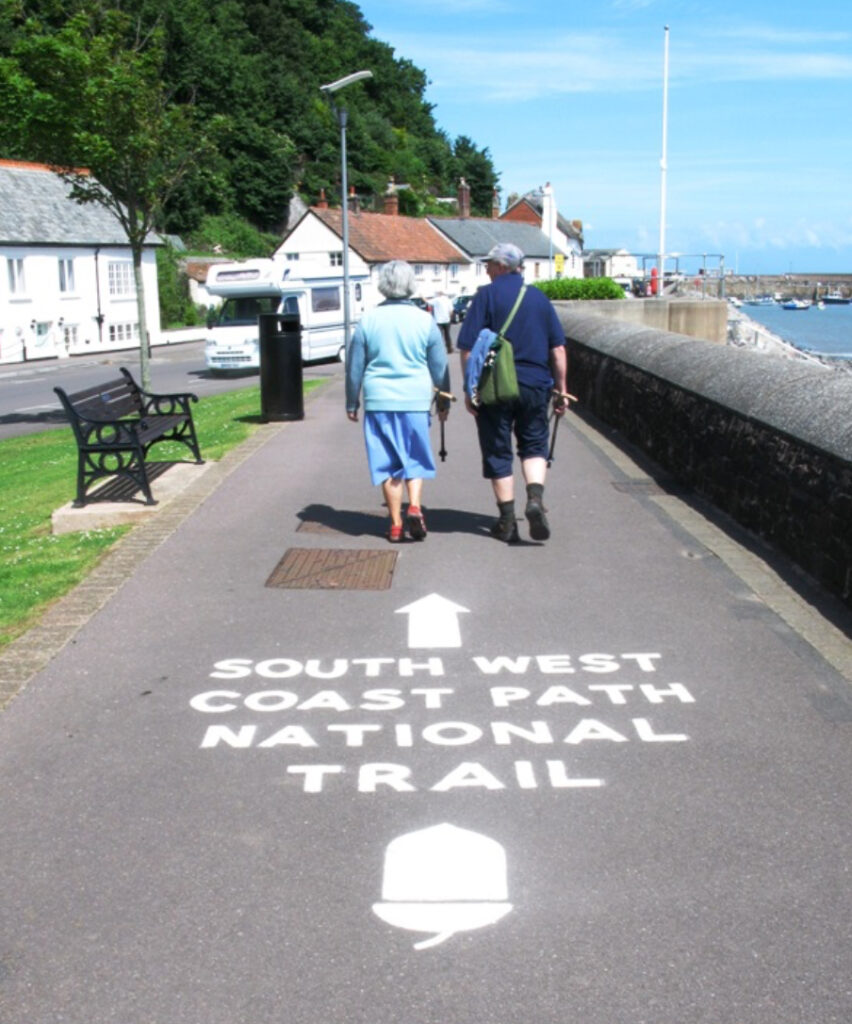
8. The Armed Knight
• A striking rock formation just off the coast, The Armed Knight resembles a ship or a medieval knight
